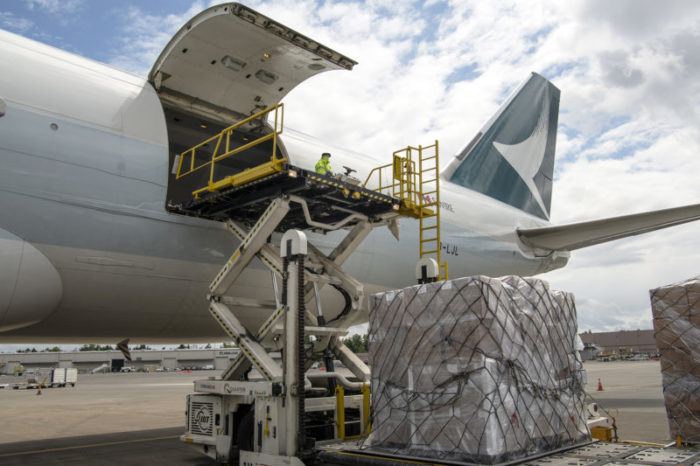-
Lifting of Shanghai’s lockdown helped alleviate supply chain constraints, contributing to an improved performance of the global air cargo sector in May
-
On a seasonally adjusted basis, 0.3% growth was recorded after two months of decline, says IATA director general Willie Walsh
-
A rebound in Asian production as COVID-19 measures ease, particularly in China, is expected to support demand for air cargo
China’s easing of Omicron restrictions, in particular, Shanghai’s two-month-long lockdown, helped alleviate supply chain constraints and contributed to a better performance of the global air cargo sector in May, the International Air Transport Association said in a statement.
Global demand, measured in cargo ton-kilometers (CTKs), was 8.3% below May 2021 levels (down 8.1% for international operations) but was better than the 9.1% year-on-year decline in April, IATA said in a report on July 7.
Capacity was 2.7% above May 2021 and up 5.7% for international operations, more than offsetting the 0.7% y-o-y drop in April. Asia-Pacific experienced the largest growth as capacity expanded in all regions, IATA said.
IATA, which has some 290 member airlines globally, said air cargo performance is being impacted by several factors:
- Trade activity improved slightly in May as Omicron-related lockdowns in China were lifted. Emerging regions also contributed to growth with stronger volumes.
- New export orders, a leading indicator of cargo demand and world trade, decreased in all markets, except China.
- The war in Ukraine continues to impair cargo capacity used to serve Europe as several airlines based in Russia are curtailed by western sanctions against Moscow while Ukrainian airlines are grounded by the war.
“May offered positive news for air cargo, most notably because of the easing of some Omicron restrictions in China. On a seasonally adjusted basis, we saw growth (0.3%) after two months of decline,” said Willie Walsh, IATA director general.
“The return of Asian production as COVID-19 measures eased, particularly in China, will support demand for air cargo. And the strong rebound in passenger traffic has increased belly capacity, although not always in the markets where the capacity crunch is most critical.”
Walsh said uncertainty in the overall economic situation needs to be watched carefully.
Regionally, Asia-Pacific airlines saw their air cargo volumes decrease by 6.6% in May 2022 compared with the same month in 2021, but IATA said this was a significant improvement over the 15.8% decline in April.
Airlines in the region have been heavily impacted by lower trade and manufacturing activity due to the lockdowns in China, but this started to ease in May as restrictions were lifted. Available capacity in the region fell 7.4% y-o-y.
North American carriers posted a 5.7% y-o-y decrease in cargo volumes in May. Demand in the Asia-North America market remained subdued; however, other key routes such as Europe-North America remain strong. Capacity increased 6.8% y-o-y.
Several North American carriers are set to take delivery of freighters this year, which should help address pent-up demand.
European carriers saw cargo volumes drop 14.6% y-o-y in May. IATA said this was the worst performance of all regions, which it attributed to the war in Ukraine.
Labor shortages and lower manufacturing activity in Asia due to Omicron also affected volumes. Capacity increased 3.3% y-o-y in May.
Middle Eastern carriers saw cargo volumes drop 11.6% y-o-y in May as expected benefits from traffic being redirected to avoid flying over Russia failed to materialize. This is likely due to persisting supply chain issues in Asia. Capacity was up 7.6% y-o-y.
Latin American carriers reported a 13.8% increase in cargo volumes in May compared with a year ago. IATA said this was the strongest performance of all regions. Airlines in this region introduced new services and capacity. May capacity was up 33.3% y-o-y.
African airlines saw cargo volumes ease 1.5% y-o-y in May, significantly slower than the 6.3% growth recorded in April. Capacity was 3.0% above May 2021 levels.









